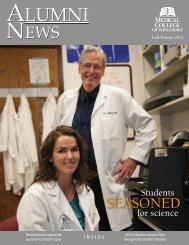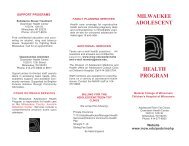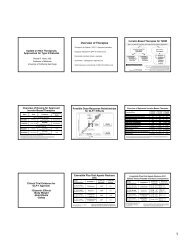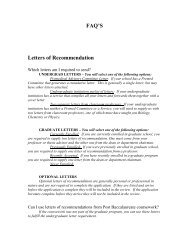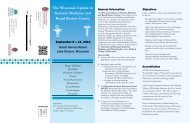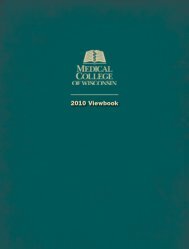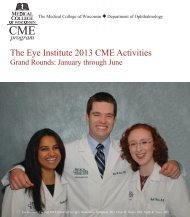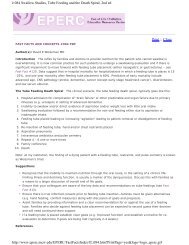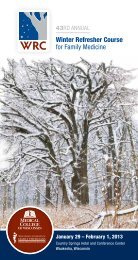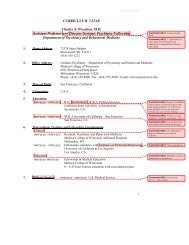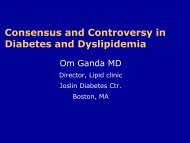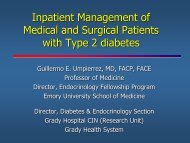MCW X-ray Diffraction Safety Manual - Medical College of Wisconsin
MCW X-ray Diffraction Safety Manual - Medical College of Wisconsin
MCW X-ray Diffraction Safety Manual - Medical College of Wisconsin
You also want an ePaper? Increase the reach of your titles
YUMPU automatically turns print PDFs into web optimized ePapers that Google loves.
Self Study Guide<br />
Risk can be generally defined as the probability (chance) <strong>of</strong> an event (injury,<br />
illness, etc.) from some activity (exposure). Risk estimates are generally<br />
expressed in terms <strong>of</strong> the excess occurrence <strong>of</strong> an effect (the number <strong>of</strong> extra<br />
incidences <strong>of</strong> an effect above the natural occurrence rate) per rem in a group <strong>of</strong><br />
people exposed uniformly.<br />
The main stochastic effects attributed to low-level exposure to radiation are<br />
cancer and genetic effects. The National Council on Radiation Protection and<br />
Measurements (NCRP) has published risk estimates for occupationally exposed<br />
adults, summarized below:<br />
Effect<br />
Excess occurrence per rem<br />
Fatal cancer 0.0004<br />
Nonfatal cancer 0.00008<br />
Severe genetic effects 0.00008<br />
Total 0.00056<br />
According to the estimates above, there will be 4 excess fatal cancers in a<br />
population <strong>of</strong> 10,000 people who each receive a radiation dose <strong>of</strong> 1 rem. It is<br />
important to recognize that these risk estimates are quite low when compared to<br />
the actual number <strong>of</strong> cancer deaths that occur in the U.S. population. According<br />
to the National Cancer Institute, the number <strong>of</strong> cancer deaths per 10,000 is<br />
2,290. 10<br />
Revised May 2004<br />
8



